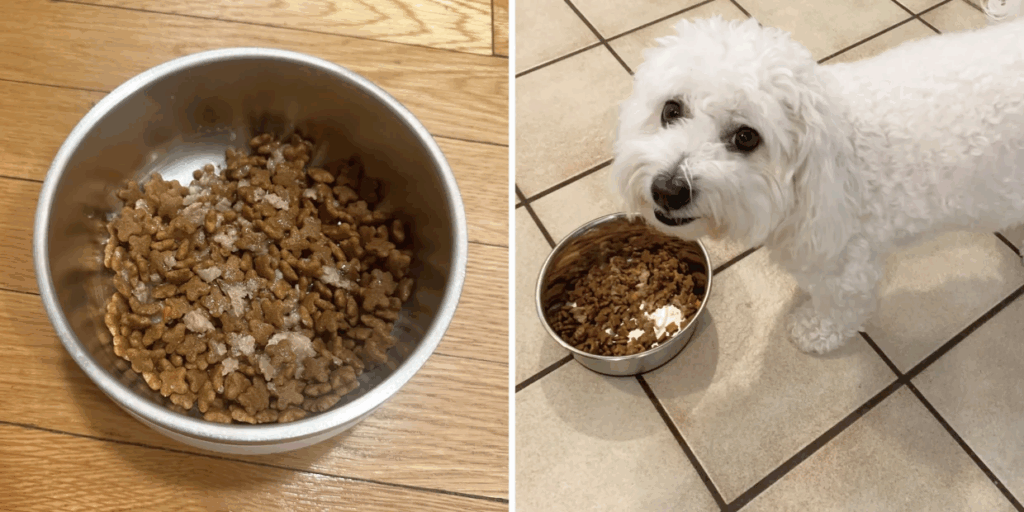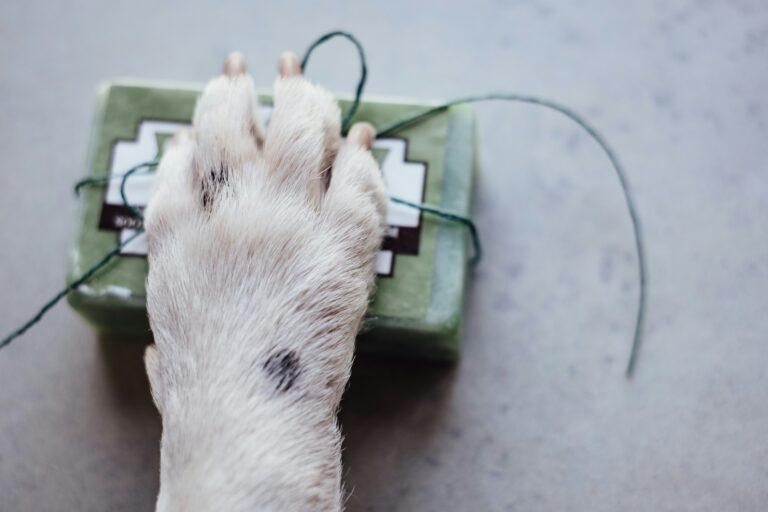Managing a small breed dog’s shedding can be a challenging task. Their tiny size and active nature often make it difficult to maintain their fluffy coats. But fret not! This informative post “Shedding Solutions: Keep Your Small Dog Breed Looking Paw-sitively Perfect with These Management Tips!” will provide you with the knowledge and tips you need to keep your furry friend looking flawless.
In this valuable content, we delve into the world of small breed dog grooming, providing expert advice and effective tips. From understanding the unique shedding patterns of small dog breeds, to the best grooming tools and practices for managing shedding, we’ve got you covered.
Moreover, we will also explore some natural remedies to promote healthy fur and reduce shedding. These remedies not only help in managing shedding, but also enhance the overall health of your beloved pet. They can be easily incorporated into your pet’s daily routine, helping them look paw-sitively perfect all year round!
Whether you’re a seasoned pet owner or a first-timer, this post is a must-read! It’s packed full of practical information that will help you better understand your small dog breed’s shedding and grooming needs. So let’s begin this fur-tastic journey and ensure your small breed dog always looks their best! 🐾🐶👍
Understanding the Shedding Process in Small Dog Breeds
As a first step to managing your small dog breed’s shedding, it’s important to understand the process. Shedding is a natural phenomenon, not a disease or disorder. Your pet’s fur grows in cycles – there’s a growth phase, a resting phase, and finally, a shedding phase. Each phase plays a crucial role in the maintenance and health of the dog’s coat, ensuring that old or damaged hairs are replaced with new growth.
This process can be affected by several factors. For example, the breed of your dog plays a significant role in determining the shedding pattern. Some breeds are naturally heavy shedders, while others are not. The environment and climate can also affect shedding. Dogs living in warmer climates may shed all year round, whereas those in colder climates typically shed seasonally. Understanding these patterns helps pet owners better prepare for managing fur loss throughout the year.
Factors Influencing Shedding
The frequency and volume of shedding can also be influenced by other factors such as the dog’s age, health, and diet. Puppies tend to shed their soft, puppy coat to make way for their adult coat, which can result in noticeable fur loss for a short period. Older dogs may shed more due to hormonal changes or underlying health conditions.
Nutrition is another vital factor. Poor nutrition can lead to excessive shedding, brittle hair, and dull coats. When dogs lack essential nutrients, their body prioritizes vital organs over the maintenance of a healthy coat, leading to increased hair loss. Skin allergies, parasitic infections like fleas and mites, and hormonal imbalances such as hypothyroidism can all disrupt the natural shedding cycle, resulting in abnormal hair loss. It’s essential to keep these factors in mind when developing a shedding management strategy for your small dog breed. Identifying and addressing the underlying causes is the first step toward a healthier coat and reduced shedding.
Effective Grooming Practices
One of the most effective ways to manage your small dog breed’s shedding is by adopting a comprehensive grooming routine. Regular grooming not only keeps your pet looking great, but it also helps control shedding and improve your pet’s overall health. Establishing a consistent grooming schedule helps remove loose fur before it has a chance to accumulate around your home. Moreover, grooming sessions allow you to inspect your dog’s skin and coat for signs of problems such as dryness, irritation, or parasites.
Brushing
Brushing your pet regularly can significantly reduce shedding. It helps remove loose hairs before they end up on your furniture or clothes. More importantly, it stimulates the natural oils in your dog’s skin, which keeps the coat healthy and reduces further shedding. The type of brush to use depends on your pet’s coat type. A slicker brush works best for most small breeds, but a bristle or pin brush may be needed for dogs with longer hair.
Short-haired breeds typically benefit from brushing once or twice a week, while long-haired breeds may require daily brushing to prevent mats and tangles. Use gentle strokes and make sure to cover all areas, including under the belly and behind the ears where mats often form. Regular brushing not only maintains coat health but also strengthens the bond between you and your dog, turning grooming into a positive experience.
Bathing
Bathing your dog helps remove loose fur and dander, which can contribute to shedding. However, over-bathing can dry out your pet’s skin, leading to more shedding. It’s best to bathe your small breed dog once every four to six weeks using a dog-appropriate shampoo. Always rinse thoroughly to remove all soap residues, as these can irritate the skin and cause more shedding.
Choosing the right shampoo is crucial. Hypoallergenic shampoos are ideal for dogs with sensitive skin, while moisturizing shampoos with oatmeal or aloe vera can help soothe dryness. After bathing, make sure to dry your dog properly with a soft towel and, if needed, a hairdryer on a cool setting. Moisturizing sprays or leave-in conditioners formulated for dogs can also help maintain skin hydration between baths, especially in dry climates or during winter months.
Nutrition and Supplements
A dog’s diet plays a critical role in its overall health and well-being, including its coat condition. A diet rich in essential fatty acids, particularly omega-3 and omega-6, can help reduce shedding and promote a healthy coat. Protein is the building block of healthy fur, so ensuring your dog consumes adequate high-quality protein is equally important.
Quality Dog Food
Feeding your small breed dog high-quality dog food can make a significant difference in their shedding. Look for dog food that lists a high-quality protein source, like chicken or beef, as the first ingredient, and contains a balance of carbohydrates, fats, and vitamins. Foods enriched with fish oils, flaxseed, and vitamin E provide additional support for coat health and skin elasticity. Avoid foods that contain fillers such as corn, soy, and wheat, as these can sometimes trigger allergic reactions or provide little nutritional value.

Supplements
Supplementing your dog’s diet with omega-3 and omega-6 fatty acids can help reduce shedding and promote a shiny coat. These fatty acids help moisturize the skin from within, reducing dryness and dander. Flaxseed oil, fish oil, and olive oil are excellent sources of these fatty acids. Always consult your veterinarian before adding supplements to ensure proper dosage and to avoid potential imbalances or side effects.
Probiotics and vitamin supplements designed specifically for dogs can also support skin health by improving digestion and enhancing nutrient absorption. A healthy gut often leads to a healthier skin barrier and reduced shedding.
Environmental Factors and Coat Health
Environmental conditions such as humidity, temperature, and exposure to allergens can significantly impact a dog’s shedding. Dry indoor air, especially during winter when heaters are running, can cause a dog’s skin to become dry and flaky, leading to increased shedding. Using a humidifier in your home can help maintain optimal humidity levels and support healthy skin and coat conditions.
Exposure to environmental allergens such as pollen, dust mites, and mold can exacerbate skin issues, triggering excessive shedding. Regular cleaning of your dog’s bedding, toys, and living areas, as well as minimizing outdoor exposure during high pollen seasons, can help manage shedding triggered by allergies.
Grooming Tools for Shedding Control
Investing in the right grooming tools can make a substantial difference in controlling your small dog’s shedding. De-shedding tools, such as the Furminator, are specially designed to reach the undercoat and remove loose hairs effectively without damaging the topcoat. Slicker brushes, rubber curry brushes, and fine-toothed combs also serve different purposes depending on your dog’s coat type.
When using grooming tools, always be gentle to avoid irritating or damaging your dog’s skin. Introduce grooming tools gradually, rewarding your dog with treats and praise to build positive associations with grooming sessions. Regular grooming not only reduces the amount of hair shed around the house but also promotes healthier skin and strengthens the bond between you and your pet. Using the correct tool for your dog’s coat type ensures better results and makes grooming a more enjoyable experience for both owner and dog.
Nutrition and Supplements
A dog’s diet plays a critical role in its overall health and well-being, including its coat condition. A diet rich in essential fatty acids, particularly omega-3 and omega-6, can help reduce shedding and promote a healthy coat.
Quality Dog Food
Feeding your small breed dog high-quality dog food can make a significant difference in their shedding. Look for dog food that lists a high-quality protein source, like chicken or beef, as the first ingredient, and contains a balance of carbohydrates, fats, and vitamins.
Supplements
Supplementing your dog’s diet with omega-3 and omega-6 fatty acids can help reduce shedding and promote a shiny coat. These fatty acids help moisturize the skin from within, reducing dryness and dander. Flaxseed oil, fish oil, and olive oil are excellent sources of these fatty acids. Additionally, biotin supplements can support healthy skin regeneration, while zinc aids in strengthening the hair follicles. Always consult your veterinarian before starting any supplement regimen to ensure proper dosing and to tailor the supplementation to your dog’s individual needs for maximum benefit.
Regular Check-ups
It’s essential to maintain regular check-ups with your veterinarian to ensure your small breed dog is healthy and not shedding due to an underlying health issue. Common health problems that can cause excessive shedding include skin infections, allergies, hormonal imbalances, and more.

Recognizing Abnormal Shedding
If you notice sudden, excessive shedding or bald spots in your small breed dog, it might be a sign of a health issue. Look out for other signs like itching, redness, inflammation, or changes in behavior, and consult your vet immediately.
Regular Vet Visits
By taking your dog for regular vet visits, you can catch any potential health problems early. Your vet can provide advice on managing your dog’s shedding and recommend specific treatments or changes in diet if necessary.
Dealing with Shedding at Home
Use Furniture Covers
While managing your small dog breed’s shedding, it’s essential to protect your furniture from dog hair. Use washable furniture covers, which you can easily remove and clean.
Clean Regularly
Regular cleaning of your home can help manage the amount of dog hair around. Vacuuming, dusting, and washing your pet’s bedding frequently can significantly reduce the amount of shed hair in your home.
In summary, shedding in small dog breeds is a natural process. While it can’t be entirely stopped, it can be managed effectively through regular grooming, a balanced diet, regular vet check-ups, and good home cleaning practices.
Conclusion
In conclusion, small dog breed grooming and shedding management are essential to keep your furry friend looking paw-sitively perfect. Regular grooming not only ensures that your pet looks their best, but it also plays a significant role in their overall health and wellbeing. Shedding is a natural process, and with these handy tips, you can easily manage it.
From regular brushing to ensure loose hair is removed, to bathing with the right products and maintaining a healthy diet, each factor plays a crucial role in shedding management. More than just aesthetics, these measures help prevent skin conditions, matting, and other health issues. Remember, a happy dog is a healthy dog, and your efforts will significantly contribute to their happiness.
Moreover, grooming sessions can also serve as a bonding time, strengthening your relationship with your pet. It’s essential to understand that every dog breed has its shedding patterns and grooming needs. As responsible pet parents, we need to embrace and manage them effectively.
With persistence, patience, and the right tools, you can easily navigate through shedding seasons, keeping your small dog breed looking their best at all times. Ultimately, it’s about understanding your dog’s unique needs and meeting them with love and care. 🐾 🐶



